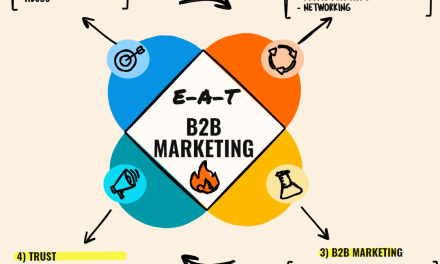What is performance branding, and how can it help Asian businesses facing the pressures of global uncertainty and austerity measures?
Global uncertainties have made consumers wary of spending, causing many brands to encounter financial pressures. However, there is a light at the end of the tunnel, and brands can thrive in these uncertain times by embracing performance branding.
Ash Dharan, NP Digital’s Senior Director, gives insights on how performance branding can help companies grow their brands, despite the challenges.
Can you briefly discuss what performance branding is, and how can this strategy help companies improve their brands?
Dharan: Performance Branding combines elements of both Brand Marketing and Performance Marketing to create a holistic approach that not only drives results, but also builds sustainable brand identity and loyalty over time. Performance branding is a relatively new concept, and to fully grasp it, one needs to understand its two main constituents:
Brand Marketing: Brand marketing is focused on building a brand’s identity, reputation, and recognition in the marketplace. Marketers build a brand by communicating its mission, values, personality, aesthetics, etc. to their audience, aiming to forge a strong connection It aims to create a lasting and positive impression in consumers’ minds, with the end goal of increased sales, customer loyalty, and long-term success in the marketplace.
Performance Marketing: Performance marketing on the other hand focuses on quantifiable results such as likes, clicks, leads, and conversions, and the return on investment (ROI) of marketing campaigns.
What are some steps a company needs to take, to have an effective performance branding strategy?
Dharan: A company’s performance branding strategy should be built on a strong foundation, which includes competitor mapping, defining the company’s online presence, creating customer personas, and developing unique value propositions. All of these elements combine to form a unique brand DNA. The brand strategy is essentially a promise that the company makes to their customers and the results it can deliver to them.
Create your brand identity. Brand identity should resonate with your target audience, be they visual elements or content that communicate to them personally. The ultimate goal is to drive brand awareness and engagement.
Create an engaging, imaginative, and marketable concept. The most crucial element in creating a successful brand advertising campaign is finding the ideal creative concept: one that captures the audience’s interest, aligns with the brand identity, inspires action, and has the potential to be showcased across various media platforms and advertising formats.

Utilize straightforward, emotionally resonant messaging that will connect with prospective customers and associate your brand with the desired purchasing scenario, so that your brand is easily recognisable in all content formats.
Opt for the most effective channels for disseminating your content. To achieve growth, a brand must expand its sales funnel. Therefore, when it comes to brand development, reaching a wide audience is of utmost importance. If you can’t reach someone, you won’t be able to capture their attention, establish a lasting impression, or influence a future purchase.
Opt for media channels, advertising placements, and ad formats that are conducive to creating lasting memories. Prospective brand buyers may not be actively considering a purchase for months or even years.
Evaluate your progress in achieving your objectives. If a brand marketing campaign doesn’t yield immediate results, it’s unlikely to have a lasting impact.
Is your brand campaign gaining momentum? Gauge short-term brand improvement to determine whether the campaign is effectively breaking through and altering awareness and attitudes.
What are the challenges that companies would possibly face in implementing a performance branding strategy, and how can they overcome these challenges?
Dharan: Defining key objectives and aligning on KPIs. Without these, we’re throwing everything at the wall and hoping something sticks. Marketing becomes muddled and the brand message is diluted.
Navigating data complexity – It is one thing to have the data, and another to know what actions to take. Keeping the message cohesive across all channels, while implementing platform-appropriate creative. Use a centralised brand management system and use certain brand elements across all creative touchpoints.
Resource constraints – limited budgets, manpower and tech can prevent the execution of a performance branding strategy. Outsource certain tasks to specialists as required.
What are some of the trends that do you see in the Asia-Pacific region when it comes to performance branding, particularly as we approach 2024?
Dharan: These trends include:
Data-Driven Insights: Brands increasingly relying on data analytics and AI to gather insights about their audience’s behaviour. This allows them to tailor their branding efforts to specific demographics, preferences, and purchasing patterns.
Personalisation: Personalized branding experiences have become a standard. Brands use data to create individualized content and recommendations, making customers feel more valued and engaged.
Content Quality Over Quantity: Instead of bombarding consumers with content, brands focus on creating high-quality, relevant content that resonates with their target audience. This includes informative blog posts, engaging videos, and interactive experiences.
Sustainability and Social Responsibility: Brands are aligning themselves with environmental and social causes to build a positive image. Many consumers prefer brands that demonstrate a commitment to sustainability and ethical practices.



















